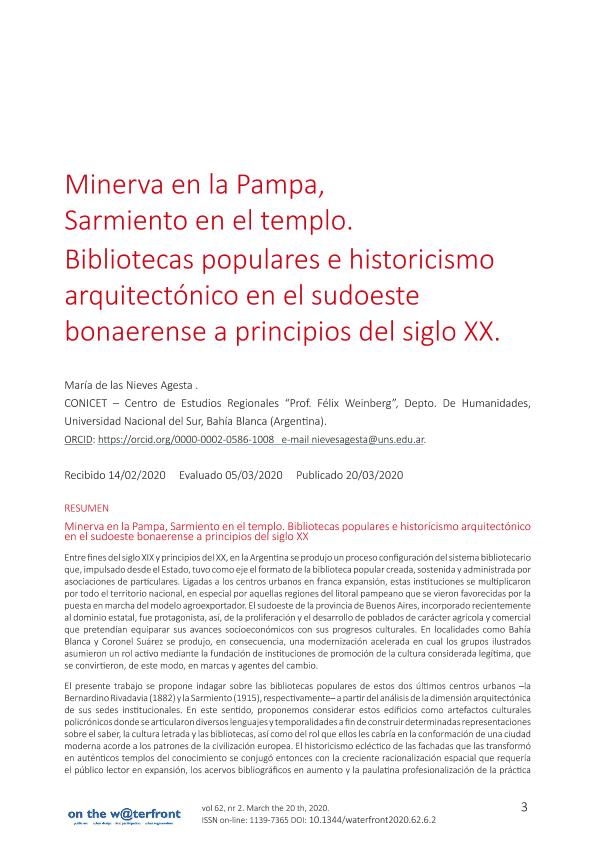Artículo
Entre fines del siglo XIX y principios del XX, en la Argentina se produjo un proceso configuración del sistema bibliotecario que, impulsado desde el Estado, tuvo como eje el formato de la biblioteca popular creada, sostenida y administrada por asociaciones de particulares. Ligadas a los centros urbanos en franca expansión, estas instituciones se multiplicaron por todo el territorio nacional, en especial por aquellas regiones del litoral pampeano que se vieron favorecidas por la puesta en marcha del modelo agroexportador. El sudoeste de la provincia de Buenos Aires, incorporado recientemente al dominio estatal, fue protagonista, así, de la proliferación y el desarrollo de poblados de carácter agrícola y comercial que pretendían equiparar sus avances socioeconómicos con sus progresos culturales. En localidades como Bahía Blanca y Coronel Suárez se produjo, en consecuencia, una modernización acelerada en cual los grupos ilustrados asumieron un rol activo mediante la fundación de instituciones de promoción de la cultura considerada legítima, que se convirtieron, de este modo, en marcas y agentes del cambio. Between the end of the 19th century and the beginning of the 20th century, in Argentina took place the configuration process of the library system, initially encouraged by the State, based on the popular library as institution created, sustained and managed by civil associations. Linked to urban centers in frank expansion, these libraries multiplied throughout the national territory, especially those regions of the pampas that were favored by the implementation of the modelo agroexportador. The southwest of the province of Buenos Aires, recently incorporated into the state domain, was thus the protagonist of the proliferation and development of agricultural and commercial villages that sought to put on the same level their socio-economic advances and their cultural progress. In locations such as Bahía Blanca and Coronel Suárez, there was, consequently, an accelerated modernization in which the literate groups assumed an active role through the foundation of institutions for the promotion of the culture considered legitimate, which thus became brands and agents of change.
Minerva en la Pampa, Sarmiento en el templo: Bibliotecas populares e historicismo arquitectónico en el sudoeste bonaerense a principios del siglo XX
Título:
Minerva in the Pampa, Sarmiento in the temple: Popular libraries and architectural historicism in the southwest of the province of Buenos Aires at the beginning of the 20th century
Fecha de publicación:
03/2020
Editorial:
University of Barcelona
Revista:
On the W@terfront
ISSN:
1139-7365
Idioma:
Español
Tipo de recurso:
Artículo publicado
Clasificación temática:
Resumen
Archivos asociados
Licencia
Identificadores
Colecciones
Articulos(CCT - BAHIA BLANCA)
Articulos de CTRO.CIENTIFICO TECNOL.CONICET - BAHIA BLANCA
Articulos de CTRO.CIENTIFICO TECNOL.CONICET - BAHIA BLANCA
Citación
Agesta, María de Las Nieves; Minerva en la Pampa, Sarmiento en el templo: Bibliotecas populares e historicismo arquitectónico en el sudoeste bonaerense a principios del siglo XX; University of Barcelona; On the W@terfront; 62; 2; 3-2020; 3-47
Compartir
Altmétricas




